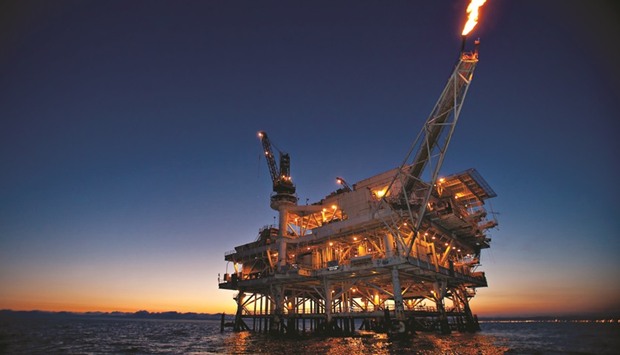“Our country is blessed with great natural resources” but too many have been closed to exploration, Trump said, during a signing ceremony in the White House Roosevelt Room. He was joined by Republican lawmakers from oil-producing states, including Senator Lisa Murkowski of Alaska and Representative Steve Scalise of Louisiana.
Trump said his executive order starts the process of opening new offshore waters to “responsible” oil and gas development, adding: “It’s going to lead to a lot of great wealth for our country and a lot of great jobs.”
The executive order also instructs Zinke to review a raft of protections governing offshore drilling, including a measure designed to address shortcomings revealed by the 2010 Deepwater Horizon disaster, triggered when a BP well blew out in the Gulf of MexiCo The resulting explosion killed 11 workers and spewed millions of barrels of crude.
That rule review could take years to unfold, even if it results in only modest changes to the regulation of offshore wells. In a White House briefing on Thursday, Zinke told reporters it would also take “a couple years” before the government could auction off new drilling rights in Pacific, Atlantic or Arctic waters. Even then, it’s not clear whether oil and natural gas companies would line up to buy them. But energy analysts say Trump’s directive sends an important signal to oil and gas companies that US waters are open for business. The offshore effort follows Trump’s previous moves to reverse a raft of Obama-era regulations limiting the extraction, transportation and use of fossil fuels.
“It shows the industry the administration is listening,” said David Pursell, a managing director at investment bank Tudor Pickering Holt & Co “The industry ought to feel pretty good given what Trump is doing inside the EPA and with these rules.”
The well-control rule, estimated to cost the industry $890mn over a decade, requires oil companies to keep a close watch on distant, deep-water drilling operations and conduct more frequent inspections of emergency equipment.
Industry lobbyists have focused their complaints on provisions requiring special permission to drill through potentially more treacherous terrain — after already investing in the territory. Without confidence of getting those approvals, companies may be reluctant to invest in offshore projects where that issue could arise, said Erik Milito, a policy director for the American Petroleum Institute.
Environmentalists say the 2016 rule — imposed after six years of analysis — is already working to prevent mishaps offshore.
It’s “reducing dangerous offshore events like the Deepwater Horizon tragedy in the Gulf of Mexico,” said Lois Epstein, an engineer and Arctic programme director with the Wilderness Society. “It only will help unsafe offshore operators if these important protections are changed.” Zinke said essential safeguards would not be eroded as part of the broad assessment set to cover regulations “from bow to stern.”
“We will find ways to look at our regulatory requirements that strengthen our safety and environmental policies,” Zinke told reporters. “America leads the world in environmental and safety protections, and I assure you we will continue that mission.”
The order prohibits the expansion of marine monuments and seeks to streamline government permitting of the seismic research that energy companies use to hunt out possible oil and gas reserves offshore. Geological contractors have been seeking permits to conduct seismic studies off the US East Coast, updating research last conducted there decades ago.
The Trump administration could face major legal obstacles in trying to swiftly sell drilling rights in areas Obama put off limits, much less reversing the order that indefinitely ruled out the activity in broad swaths of the Arctic and Atlantic.
Both would be tough to accomplish, said former offshore regulator Tommy Beaudreau and Jason Bordoff, a former special assistant to Obama. In a paper issued by Columbia University’s Center on Global Energy Policy, they note that the Trump administration can only make broad changes to the five-year leasing plan if it subjects them to extensive environmental scrutiny and public comment. And environmentalists argue it would be unprecedented for any president to rescind a predecessor’s permanent leasing withdrawal — a move they vow to fight in court. The order does not explicitly compel additional oil and gas lease sales in any specific area, nor will the Trump administration abandon planned auctions of tracts in the Gulf of Mexico and in Alaska’s Cook Inlet. And Zinke said he would ensure local communities have a voice in the process.
Zinke said he would recommend including lease sales for “areas that are acceptable, that have the resources,” and where both industry and local communities support drilling.
Oil companies awash in crude from onshore drilling into dense shale formations in Texas, New Mexico and North Dakota may have little appetite for leases in the Atlantic or the Arctic. Those onshore wells generally don’t yield crude for as long as their offshore counterparts, but they also cost much less. In the Arctic, Atlantic and the Pacific Ocean, development costs are high — as are the risks of drilling a “dry hole.”

